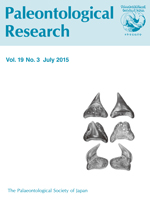Well preserved specimens of two ophiuroid species, both assignable to an unknown family (formerly Ophiolepididae) and here placed in Ophiomusium and Ophiosphalma have been recovered from lower Miocene deep-sea formations in Japan. The material consists of an assemblage of over 75 articulated body fossils and numerous semiarticulated arm segments from the lower Miocene Oi Formation (Ichishi Group), Mie Prefecture, central Japan, identified as the extant species Ophiomusium lymani Wyville Thomson and a single articulated body fossil assigned to the extant Ophiosphalma cancellata (Lyman) from the lower Miocene Shida Formation (Oigawa Group), Shizuoka Prefecture, central Japan. These occurrences constitute the oldest fossil record of these present-day brittlestar species. The latter is the first fossil record for the genus Ophiosphalma. The new material documents that the closely related genera Ophiomusium and Ophiosphalma had already diverged by the early Miocene. Furthermore our findings suggest that the ancient Ophiomusium lymani and Ophiosphalma cancellata inhabited the same upper bathyal environment as their Recent counterparts.
How to translate text using browser tools
1 July 2015
Two Ophiuroid Species (Echinodermata, Ophiuroidea) from Lower Miocene Deep-Sea Sediments of Japan
Yoshiaki Ishida,
Toshihiko Fujita,
Ben Thuy
ACCESS THE FULL ARTICLE

Paleontological Research
Vol. 19 • No. 3
July 2015
Vol. 19 • No. 3
July 2015
bathyal
Oi Formation
Ophiomusium lymani
Ophiosphalma cancellata
Shida Formation




